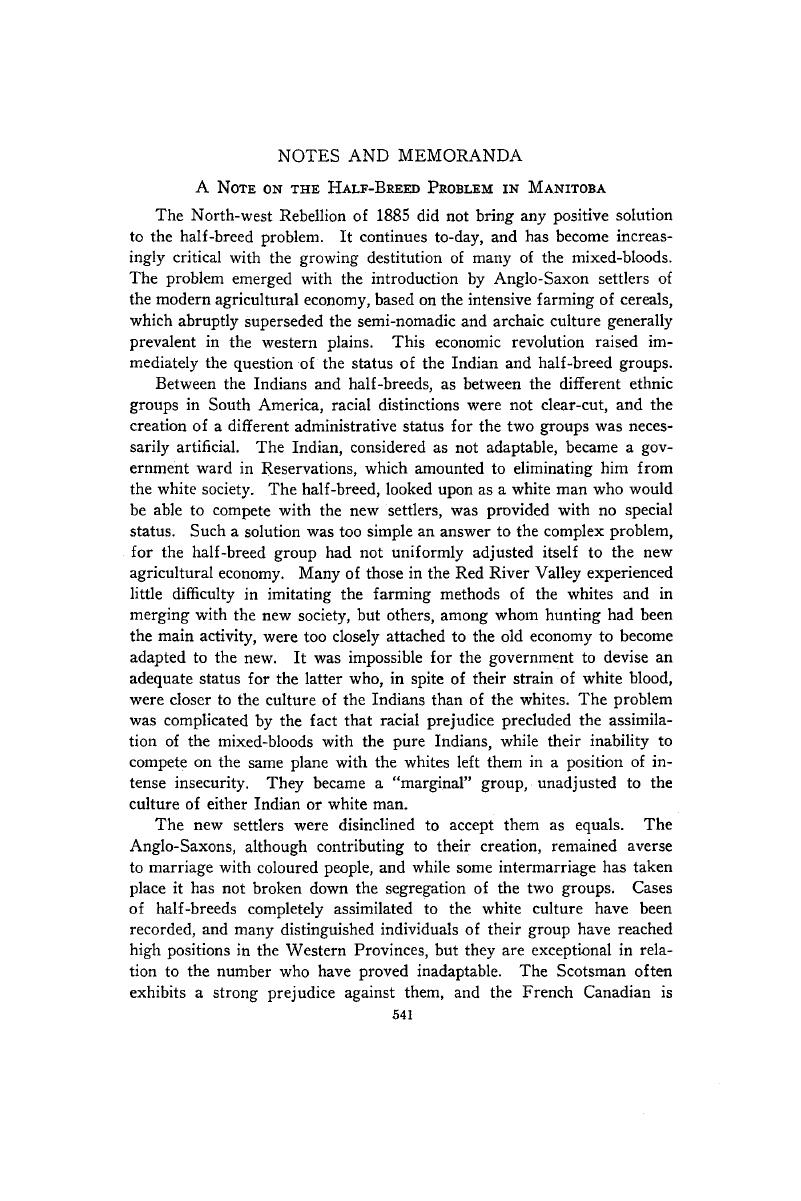Article contents
A Note on the Half-Breed Problem in Manitoba
Published online by Cambridge University Press: 07 November 2014
Abstract

- Type
- Notes and Memoranda
- Information
- Canadian Journal of Economics and Political Science/Revue canadienne de economiques et science politique , Volume 3 , Issue 4 , November 1937 , pp. 541 - 549
- Copyright
- Copyright © Canadian Political Science Association 1937
References
1 The problem of half-breed groups is not confined to the Canadian Prairie Provinces. Most of the frontiers where coloured and white races have lived in contact have undergone the same racial mixtures. The half-breeds were useful, not to say indispensable, to the economic development of lands where the overwhelming superiority of primitive races would have delayed colonization had it not been for the mediating action of the half-breeds. Misconstruction placed on the events of 1815-6 has often led to the opinion that the half-breeds have played in the history of Manitoba a purely negative part. More often than not, one forgets that Governor Simpson relied on them for defending the colony against attacks by the Sioux or Assiniboin tribes. The Red River Settlement was protected by the half-breed vanguards of Pembina and the White Horse Plain. Similarly, the Argentinian Pampa was protected by the half-breed population of “blandengues” against hostile Indians; so was the European penetration, on the frontier of Orange, preceded by the Basters' slow progression. But, while the presence of half-breeds was favourable to the process of colonization, an almost insoluble problem thus originated in those areas which had passed through the first stages of frontier life: it appears in the Orange Free State as the problem of the Griquas whose lands have been taken away by speculators; it appears, although not on the same scale, in the middle-western American states bordering on the Canadian boundary line; it affects India to a certain extent, and it would be found in South America as well if the white settlers had not been of Latin descent. In Canada, the memory of the useful contribution of the half-breeds to the history of the prairie has hardly outlived, except for some scholars, the troubles of 1870 and 1885. To the historical stage, rapidly passing away in a country where a work of transformation is unceasingly under way, has now succeeded the actual question of the situation of the half-breeds in a social environment which still largely repels them.
2 Frederick Ulric Graham had already noted this distinction in 1847, but, in contrast with the view to-day, he admired the Saskatchewan half-breed, more primitive, more heedless of dangers and exposures, more akin to “Highland stalkers”, whereas he blamed the effects of civilization for the downward tendency of the Red River half-breeds who, in his opinion, were the “Cockneys” of the plains.
- 1
- Cited by




